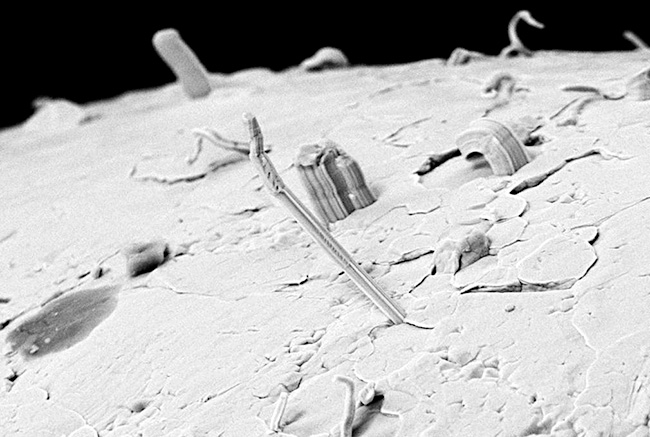
The spontaneous growth of tin filaments (whiskers) on the surfaces of electronic devices compromises the success of ESA's space missions.
A whisker is a metallurgical phenomenon at the crystalline scale, resulting in the spontaneous growth of very thin filaments on metallic surfaces, particularly tin. This phenomenon has been studied for years on Earth, but no information is available on its growth in vacuum, especially in an orbital setting.
The European Space Agency (ESA) has documented several cases where commercial satellites have suffered system control processor (SCP) failures due to the growth of whiskers on electromagnetic relays. In several cases, both the main and auxiliary SCPs with which the satellites are equipped were rendered inoperative, leading to the failure of their respective aerospace endeavours. Therefore, among the tenders launched last year by the ESA to carry out research providing solutions to its most relevant problems, there is one aimed at studying the behaviour of these filaments in vacuum, and CIDETEC Surface Engineering has been the centre selected to spearhead it.
The specialised surface engineering centre aims to conduct a comparative analysis of the growth of whiskers under atmospheric and vacuum conditions to determine, as all indications suggest, whether there are differences in the behaviour of these filaments under such a different conditions. During the research, the filaments will be melted with micro-manipulators for the purpose of electrical characterization, thereby obtaining information on the appropriate measures to be taken to avoid subsequent malfunctions. By determining the characteristics of the whisker, it will be possible to ascertain the likelihood of a short-circuit occurring and, subsequently, to implement preventative measures.
The research and roadmap established by CIDETEC Surface Engineering experts will be facilitated by the participation of two leading European research centres, namely the Budapest University of Technology and Economics (BME) and the Polish Łukasiewicz-IMiF, the major references in Europe in surface engineering research in the field of whiskers.